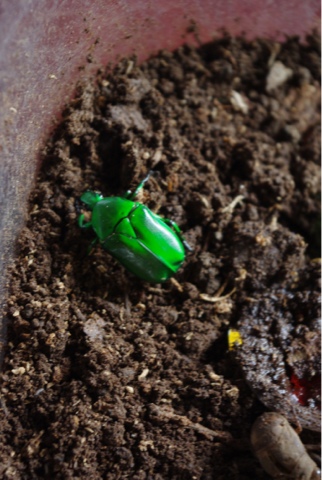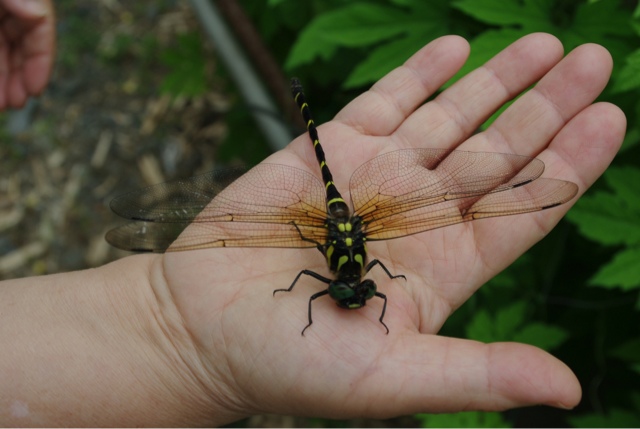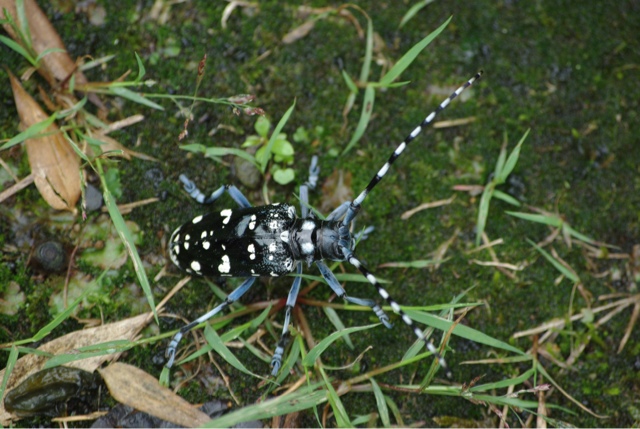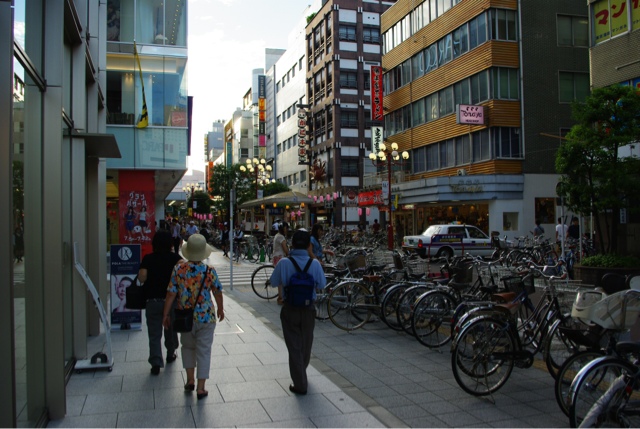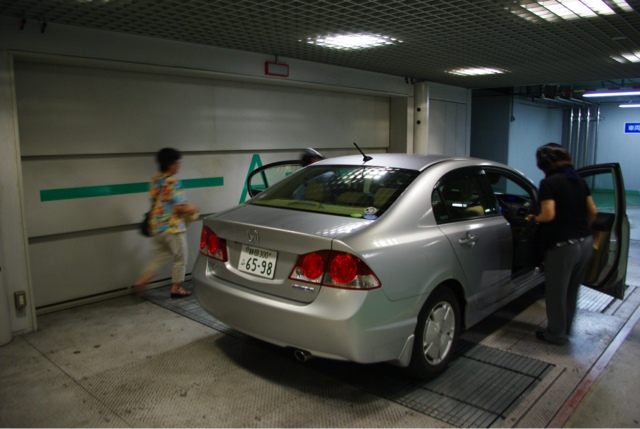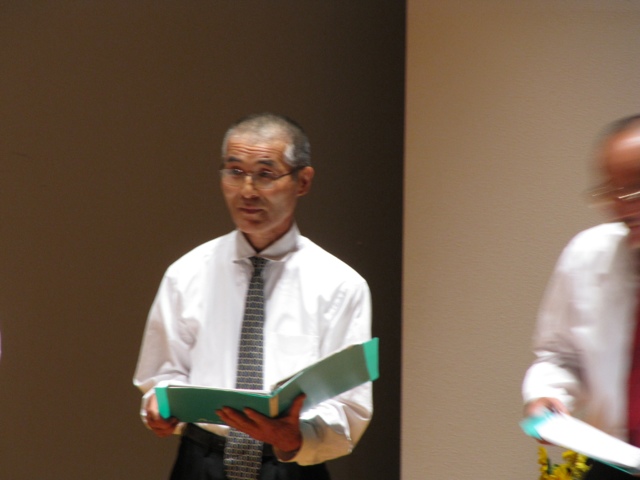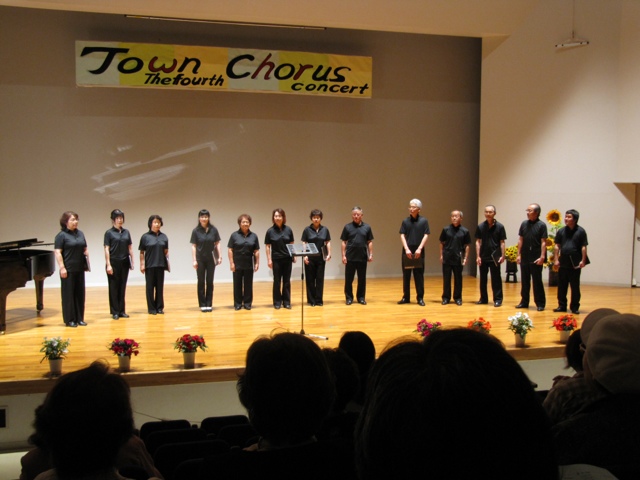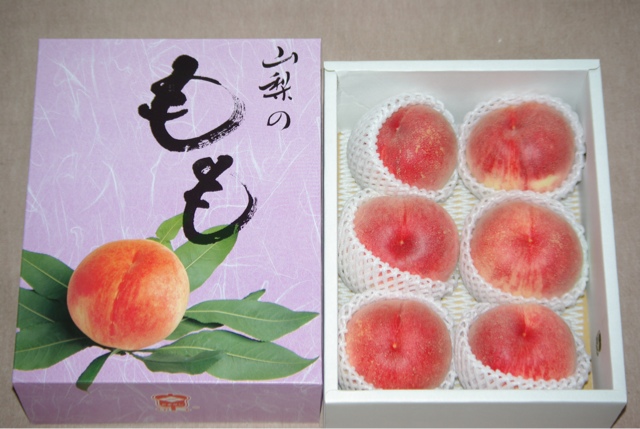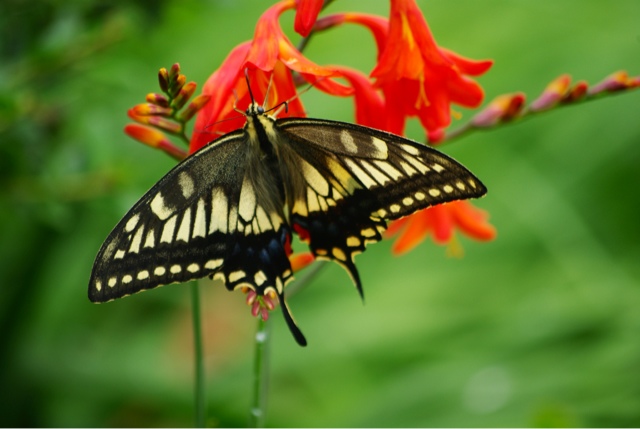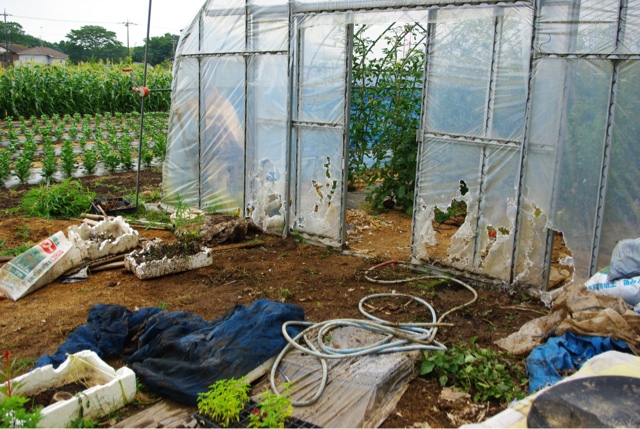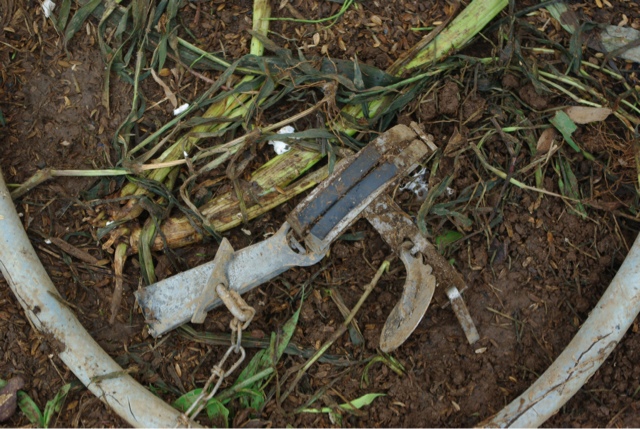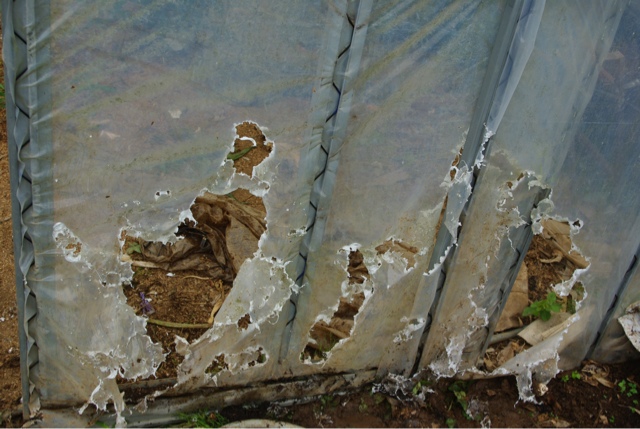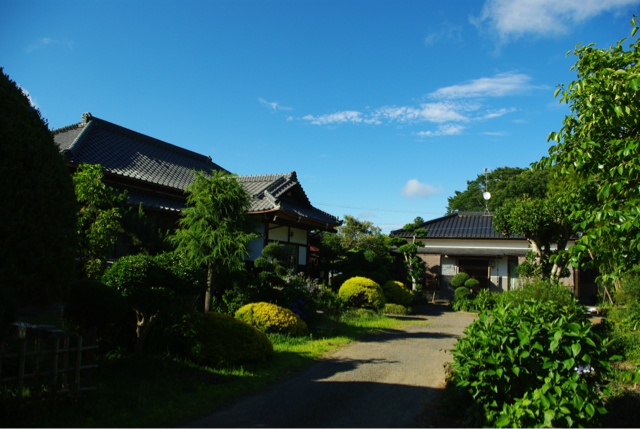July 22, 2012 Kenji and the two of us were invited to the Okano's for dinner. There were a variety of tasty dishes including tempura. One unusual item were the shoots of the mioga plant growing wild behind the garage. We ate them raw as well as tempura. Both were quite delicious. There were five of us and food enough for twelve people. We had a good time chatting and after dinner Shigeko brought out some handheld hanabi or fireworks. We went outside and enjoyed watching hana or flowers created by the hanabi.
Saturday 28 July 2012
Edosaki Matsuri or Festival
July 21, 2012 Saturday evening Akio and Shigeko Okano took us into Edosaki into the centre of town where a number of booths had been set up. These sold various types of food, including roasted sakana or fish, ika or squid and of course candy cotton and candy coated bananas. Two vendors were selling bags of tiny feeder goldfish.
We reached the four way intersection where there were about two floats in each of the four directions. There were probably close to ten people on each float playing various instruments and numerous dancers and people to pull the floats around the floats. The floats took turns entering the centre of the intersection. Each float was of a similar design in that it pivoted on a central spindle. Once in the intersection the attendants on the ground would spin the upper section of the float housing the musicians. It appeared to be a competition, although I could not ascertain what the criteria for winning would be. As an onlooker I almost became disorientated and felt sympathetic towards the dizzy musicians.
The crowds in the street appeared to be mostly young people and apparently once the older generation has left the street party begins.
Of course I had to buy a roasted ika or squid as we headed home.
Click on Edosaki Matsuri to see photographs on Picasa.
We reached the four way intersection where there were about two floats in each of the four directions. There were probably close to ten people on each float playing various instruments and numerous dancers and people to pull the floats around the floats. The floats took turns entering the centre of the intersection. Each float was of a similar design in that it pivoted on a central spindle. Once in the intersection the attendants on the ground would spin the upper section of the float housing the musicians. It appeared to be a competition, although I could not ascertain what the criteria for winning would be. As an onlooker I almost became disorientated and felt sympathetic towards the dizzy musicians.
The crowds in the street appeared to be mostly young people and apparently once the older generation has left the street party begins.
Of course I had to buy a roasted ika or squid as we headed home.
Click on Edosaki Matsuri to see photographs on Picasa.
Monday 23 July 2012
Shizuoka Ocha or Green Tea
Shizuoka is famous in Japan for the quality and quantity of green tea being produced here. Green tea purchased outside of Japan is frequently of third rate quality. It was probably close to twenty years or more after Yayoi came to Canada that we realized that the green teas we were being sent, especially from her friend Etchan (Etsuko) in Shizuoka, were of exceptional quality. A very good green tea is made from a few young leaves at the end of each tea bush branch. Shizuoka has hillsides and climate ideal for growing green tea. Shizuoka is also known for its "mikan" or Japanese oranges. The photograph shows a hillside covered with rows of green tea between the trees and bamboo. The area in the centre among some larger bushes is a darker green indicating that these young leaves have not been plucked yet.
Collecting Mother Nature
Thanks to Okano Yoko-san it has become clear that Japan is a nation of collectors.
On a previous visit to Japan we saw many school kids on the rocky seashore near Yokosuka with special plastic boxes collecting biological specimens of interest.
I find the praying mantis quite interesting, like a grasshopper that has lost all of its muscle.
Earlier this year we were with Fukuda-san in Utsunomiya when his friend brought him some caterpillars which would eventually become butterflies for his collection.
In Komatsuka where we are staying I have seen a number of butterfly nets, one being used to eliminate cabbage butterflies and more recently a father and son hunting insects at dusk.
Yesterday Yoko-san showed me a bright iridescent green bug and a number of 'kabuto' or rhinoceros beetles. This morning July 20, 2012 Yoko-san showed me two large (almost 10cm) caterpillars in the process of munching 'nasu' or eggplant leaves and about to become pupae. She did not know what they would develop into. This afternoon she came to show us a couple of 'semi' or cicadas she had captured just after we had found a giant 'tombo' or dragonfly. This incredible lady is an active grandmother and collects things to show her grandchildren.
After the NHK televised sumo matches at 6pm I took Muku for his walk. In the neighbouring village of Minamigaoka two young boys observed my interest and brought their various plastic containers containing rhinoceros beetles and other insects they had collected recently to the fence for me to see. They were quite excited to have an audience.
On a previous visit to Japan we saw many school kids on the rocky seashore near Yokosuka with special plastic boxes collecting biological specimens of interest.
I find the praying mantis quite interesting, like a grasshopper that has lost all of its muscle.
Earlier this year we were with Fukuda-san in Utsunomiya when his friend brought him some caterpillars which would eventually become butterflies for his collection.
In Komatsuka where we are staying I have seen a number of butterfly nets, one being used to eliminate cabbage butterflies and more recently a father and son hunting insects at dusk.
Yesterday Yoko-san showed me a bright iridescent green bug and a number of 'kabuto' or rhinoceros beetles. This morning July 20, 2012 Yoko-san showed me two large (almost 10cm) caterpillars in the process of munching 'nasu' or eggplant leaves and about to become pupae. She did not know what they would develop into. This afternoon she came to show us a couple of 'semi' or cicadas she had captured just after we had found a giant 'tombo' or dragonfly. This incredible lady is an active grandmother and collects things to show her grandchildren.
After the NHK televised sumo matches at 6pm I took Muku for his walk. In the neighbouring village of Minamigaoka two young boys observed my interest and brought their various plastic containers containing rhinoceros beetles and other insects they had collected recently to the fence for me to see. They were quite excited to have an audience.
Kani or crab dinner
After a day of sight seeing in Shizuoka we were treated to a crab dinner at a place close to the Shizuoka train station (of course, as stations are where the action is). The restaurant with its front end plastic displays is located on an interesting pedestrian street. We were shown to a private room and the entertainment began. As with most Japanese restaurants, the taste, presentation and service were exceptional. But the dish shown in the photograph with an irregularly shaped green dish and an orange dipping dish with crab eyes in front was a bit of a surprise for me. I ate first and asked questions later as to the nature of this soft almost gelatinous crab meat. Sure enough this was the first time I have eaten raw crab meat, that I am aware of. It may take some getting used to. Four very satiated patrons exited the restaurant after devouring multiple courses.
Car Park
I have seen many mechanical car parks including ones for bicycles in Japan, but this was a first. We entered what appeared to be normal underground parking near Shizuoka Eki or train station, when suddenly we were directed off to one side as though a police search was about to take place. Aha, they finally caught that unwelcome foreigner?
The car was positioned carefully and we were told to get out. We hardly had time to collect our wits when steel belts under the front two tires and the back two tires whisked the car sideways and a door shut. It appears to be the most sophisticated "chop shop" I have ever seen in any Hollywood film.
Our driver was given a magnetically encoded card which was later used to pay the parking in a secure area outside of the parking area. As in the photograph we waited until the car appeared as it had disappeared and the door unlocked to let us retrieve the vehicle.
Try buying gasoline for your car in this country, it can be a little unnerving as well.
The car was positioned carefully and we were told to get out. We hardly had time to collect our wits when steel belts under the front two tires and the back two tires whisked the car sideways and a door shut. It appears to be the most sophisticated "chop shop" I have ever seen in any Hollywood film.
Our driver was given a magnetically encoded card which was later used to pay the parking in a secure area outside of the parking area. As in the photograph we waited until the car appeared as it had disappeared and the door unlocked to let us retrieve the vehicle.
Try buying gasoline for your car in this country, it can be a little unnerving as well.
Hamamatsu
The three most famous Japanese historical figures are probably Nobunaga Oda, Hideyoshi Toyotomi and Tokugawa Ieyasu (last name first name). They coexisted more than 400 years ago and each desired to rule a unified Japan which had been in a state of continuous clan warfare for hundreds of years. Their characters were very different. It has been said of the three that Nobunaga expected your compliance with his wishes or he would kill you, Hideyoshi would persuade you, while Tokugawa simply waited until events played out to his advantage.
On July 16, 2012 Yayoi's friend Etsuko and cousin Atsutada and ourselves took the new Tomei freeway from Shizuoka to the city of Hamamatsu to see the 'shiro' or castle. Hamamatsu-Jo (castle) is where Tokugawa lived for 17 years. Ieyasu Tokugawa and Shingen Takeda fought a major battle at Mikatagahara near here in the year 1572 where Tokugawa was badly beaten and had to retreat to Hamamatsu-Jo.
The Takeda troops camped near Saiga-gake which is a deep gully north of the current Saiga-gake Pavilion which is a museum commemorating what happened here. The Tokugawa troops placed a cloth bridge over the gully and then began to fire guns behind the Takeda troops to make them think that Nobunaga Oda was coming with his troops to aid Tokugawa. The Takeda troops felt compelled to cross the cloth bridge and many were killed or injured.
To commemorate these deaths each year on July 15 (the day before we visited) the Enshu Dai-nenbutsu dance is held in front of the Saiga-gake Pavilion.
Click on Hamamatsu to see photographs on Picasa.
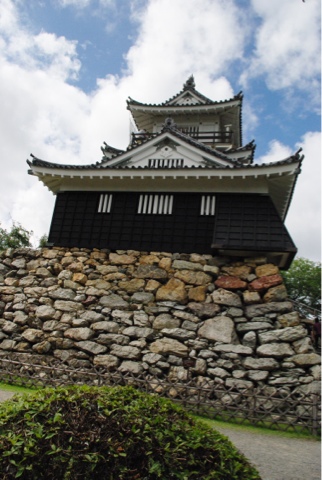
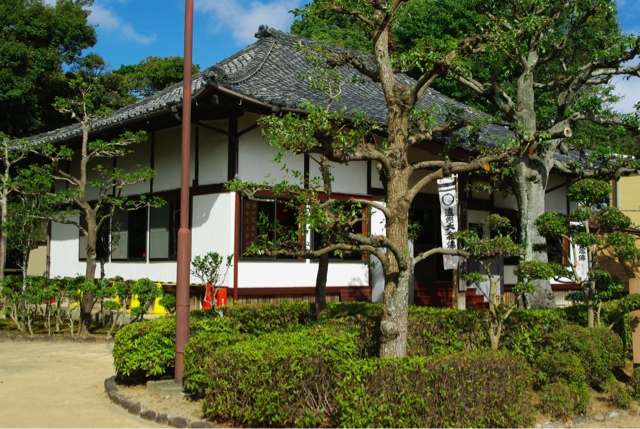
On July 16, 2012 Yayoi's friend Etsuko and cousin Atsutada and ourselves took the new Tomei freeway from Shizuoka to the city of Hamamatsu to see the 'shiro' or castle. Hamamatsu-Jo (castle) is where Tokugawa lived for 17 years. Ieyasu Tokugawa and Shingen Takeda fought a major battle at Mikatagahara near here in the year 1572 where Tokugawa was badly beaten and had to retreat to Hamamatsu-Jo.
The Takeda troops camped near Saiga-gake which is a deep gully north of the current Saiga-gake Pavilion which is a museum commemorating what happened here. The Tokugawa troops placed a cloth bridge over the gully and then began to fire guns behind the Takeda troops to make them think that Nobunaga Oda was coming with his troops to aid Tokugawa. The Takeda troops felt compelled to cross the cloth bridge and many were killed or injured.
To commemorate these deaths each year on July 15 (the day before we visited) the Enshu Dai-nenbutsu dance is held in front of the Saiga-gake Pavilion.
Click on Hamamatsu to see photographs on Picasa.


Saturday 7 July 2012
Town Chorus
July 7, 2012 we were treated to a nice break from some of the routines of farm life. Okano Akio-san and his choir have been practicing hard. He is one of the tenors in the group. At two in the afternoon they began entertaining us with a combination of Gregorian chant music, some Japanese pieces both traditional and current as well as music with a jazz flavour while wearing the solid black outfits. At one point Okano-san sang a short solo. Okano-san is an artist both with colour and with his voice, which was very pleasant to listen to. The choir pieces were nicely interspersed with pieces done by piano, keyboard, recorder and voice.
Following the concert and reception lineup, Okano Shigeko-san took two of us across the road where we joined Kenji-san for a late afternoon coffee break whose conversations extended up to five pm at which time we decided we might as well eat dinner there as well.
In the meantime Okano-san spent the evening celebrating with the choir group.
Following the concert and reception lineup, Okano Shigeko-san took two of us across the road where we joined Kenji-san for a late afternoon coffee break whose conversations extended up to five pm at which time we decided we might as well eat dinner there as well.
In the meantime Okano-san spent the evening celebrating with the choir group.
Friday 6 July 2012
Nihongo or Japanese Language
One of the goals in our coming to Japan was that a linguistically inept person such as myself could begin to learn Japanese. I often tell Yayoi or myself that I am losing as much Eigo or English as I am gaining Japanese. The proof of that is in my fascination with two philanderers (slander) Hefner and Grant. Do a search in our BLOG for occurrences of the word hugh when I meant to say huge. Ha ha. Even the iPad warns me that maybe I mean to say Hugh (the name) instead of hugh, but I stubbornly carry on.
I have to admire the people who have the ability to memorize thousands of kanji characters as well as two alphabets comprised of 46+ characters each. Japanese and English are polar opposites in their composition and thought patterns. Translation is difficult, but to interpret for someone in real time must be incredibly tiresome. You simply cannot take a sentence in either language and directly convert it (neither can Google - slander again).
People learning Japanese in North America are taught Hiragana first, which is the Japanese alphabet used to write words that may not have a kanji equivalent. It is not uncommon to have kanji characters with the hiragana equivalent alongside which allows the reader to at least be able to pronounce the kanji character. Just as in English a Japanese word or set of hiragana characters can have multiple meanings, but frequently also has multiple kanji characters. When reading hiragana and kanji are probably more important, but it quickly becomes quite obvious that the other alphabet Katakana is essential under some circumstances. Katakana is a parallel alphabet to Hiragana and is used to spell out words borrowed from foreign languages and as with English there are many of these. It is also used to spell out onomatopoeia expressions. Katakana is essential when shopping in grocery and drug stores as so many items did not exist in the Japanese environment years ago and these have been named with foreign equivalent expressions.
Lastly in regard to my learning the language, lets not go there.
I have to admire the people who have the ability to memorize thousands of kanji characters as well as two alphabets comprised of 46+ characters each. Japanese and English are polar opposites in their composition and thought patterns. Translation is difficult, but to interpret for someone in real time must be incredibly tiresome. You simply cannot take a sentence in either language and directly convert it (neither can Google - slander again).
People learning Japanese in North America are taught Hiragana first, which is the Japanese alphabet used to write words that may not have a kanji equivalent. It is not uncommon to have kanji characters with the hiragana equivalent alongside which allows the reader to at least be able to pronounce the kanji character. Just as in English a Japanese word or set of hiragana characters can have multiple meanings, but frequently also has multiple kanji characters. When reading hiragana and kanji are probably more important, but it quickly becomes quite obvious that the other alphabet Katakana is essential under some circumstances. Katakana is a parallel alphabet to Hiragana and is used to spell out words borrowed from foreign languages and as with English there are many of these. It is also used to spell out onomatopoeia expressions. Katakana is essential when shopping in grocery and drug stores as so many items did not exist in the Japanese environment years ago and these have been named with foreign equivalent expressions.
Lastly in regard to my learning the language, lets not go there.
Peaches
Momo or peaches are one of the many foods we have been privileged to eat thanks to the generosity of so many people in this country. We will never to able to repay the graciousness of the people in this country.
We received some peaches today, boxed as though they were expensive chocolates and delivered by Japan Postal Service. They were huge and I imagine incredibly expensive. Two of us shared the first one and were impressed by the unadulterated sweetness and the juice that just seemed to ooze from everywhere.
It is criminal that someone back in North America would pick an unripe peach (or any fruit) and dare to ship it to uneducated consumers. Do that with any other commodity and jail awaits. It has been years since we have eaten decent peaches in North America.
Later another person in our village asked me whether "suika taberu?" or do you eat watermelon? Well two slices landed in my possession and off I went. Again nice texture, perfectly sweet and juicy.
We received some peaches today, boxed as though they were expensive chocolates and delivered by Japan Postal Service. They were huge and I imagine incredibly expensive. Two of us shared the first one and were impressed by the unadulterated sweetness and the juice that just seemed to ooze from everywhere.
It is criminal that someone back in North America would pick an unripe peach (or any fruit) and dare to ship it to uneducated consumers. Do that with any other commodity and jail awaits. It has been years since we have eaten decent peaches in North America.
Later another person in our village asked me whether "suika taberu?" or do you eat watermelon? Well two slices landed in my possession and off I went. Again nice texture, perfectly sweet and juicy.
Free Spirits
Butterflies are definitely free spirits. Japanese yellow swallowtail butterflies are gorgeous adherents to this principle. How can anything so fragile in appearance be so successful in this game we call life. They appear to be absolutely carefree, no goals, no destination and life is a casual affair. We have watched a pair of them flitting amongst the flowers in front of our house and wondered whether the opportunity would ever arise to be able to capture their images.
Successful they are as the complete ruin of our cabbage crop can attest to thanks to the presence of a smaller white relative of the photos depicted and its abundant leaf munching progeny which I spent hours trying to eliminate to no avail.
Click on Butterflies to see photographs on Picasa.
Successful they are as the complete ruin of our cabbage crop can attest to thanks to the presence of a smaller white relative of the photos depicted and its abundant leaf munching progeny which I spent hours trying to eliminate to no avail.
Click on Butterflies to see photographs on Picasa.
Wednesday 4 July 2012
It begins
July 4, 2012
For months now many people have been warning (threatening) us that summer is coming and we will not be able to stand the heat. June was supposed to be the rainy season and did not really live up to expectations. Late June summer officially began, but today it has begun to feel like summer. It has been 32°C in the house today and the humidity is about 80%. It has rained quite a bit since July began. But nothing like Kyushu. They might as well be measuring precipitation in meters. It has rained close to or more than two meters (80 inches) in the last little while. The effects in a number of areas is almost as devastating as the tsunami that hit Fukushima in March of last year.
But back to the heat. Japanese nervous systems must be wired differently than foreigners. A study was demonstrated on NHK television here where foreigners and Japanese people were exposed to the sound of bells (furin) that are frequently hung under the eaves of a house as an indicator of the presence of breezes. The Japanese people reacted to the sound of the chimes as though a breeze had just passed by. The foreigners had a variety of reactions, but essentially they had little or negative reactions to the chimes. Japanese people felt cooler and foreigners in some cases felt hotter.
Give me a frozen azuki bean popsicle and I will feel cooler. Oishi - delicious!
For months now many people have been warning (threatening) us that summer is coming and we will not be able to stand the heat. June was supposed to be the rainy season and did not really live up to expectations. Late June summer officially began, but today it has begun to feel like summer. It has been 32°C in the house today and the humidity is about 80%. It has rained quite a bit since July began. But nothing like Kyushu. They might as well be measuring precipitation in meters. It has rained close to or more than two meters (80 inches) in the last little while. The effects in a number of areas is almost as devastating as the tsunami that hit Fukushima in March of last year.
But back to the heat. Japanese nervous systems must be wired differently than foreigners. A study was demonstrated on NHK television here where foreigners and Japanese people were exposed to the sound of bells (furin) that are frequently hung under the eaves of a house as an indicator of the presence of breezes. The Japanese people reacted to the sound of the chimes as though a breeze had just passed by. The foreigners had a variety of reactions, but essentially they had little or negative reactions to the chimes. Japanese people felt cooler and foreigners in some cases felt hotter.
Give me a frozen azuki bean popsicle and I will feel cooler. Oishi - delicious!
Sunday 1 July 2012
Hakubishin
This refers to a masked palm civet which is about the size of a house cat. The animal is quite vicious. Japan does not have many species of wild animals. The largest are probably the two types of kuma or bears, then come the inoshishi or wild boar, the shika or deer, kitsune or fox, tanuki or raccoon, itachi or ferret, saru or monkey and usagi which is a seldom seen long eared rabbit.
At least one hakubishin visited the tomato greenhouse a few nights ago and chewed up the insides of nice ripe tomatoes. In response blue netting was stretched around three sides of the greenhouse leaving the entrance side accessible. A steel trap was set up inside the door and the next day the trap had vanished. Last night another trap was set up. Sure enough our masked bandit could not resist the smell of fresh red tomatoes and ended up caught in the trap. Infuriated the intruder tore the vinyl of the doors and front wall to shreds. Netting had to be thrown over the animal to partially subdue it followed by dispatching it with a hammer. Cruel, maybe, but animal proofing the greenhouse against such a determined creature is virtually impossible.
At least one hakubishin visited the tomato greenhouse a few nights ago and chewed up the insides of nice ripe tomatoes. In response blue netting was stretched around three sides of the greenhouse leaving the entrance side accessible. A steel trap was set up inside the door and the next day the trap had vanished. Last night another trap was set up. Sure enough our masked bandit could not resist the smell of fresh red tomatoes and ended up caught in the trap. Infuriated the intruder tore the vinyl of the doors and front wall to shreds. Netting had to be thrown over the animal to partially subdue it followed by dispatching it with a hammer. Cruel, maybe, but animal proofing the greenhouse against such a determined creature is virtually impossible.
Welcome to our World
Komatsuka, Ibaraki, Japan
Currently when we gaze out of our patio door like windows our view of the greenery outside is obscured somewhat by grass sunscreens installed by our host Okano-san. The growth where people live is somewhat controlled, but many areas I have seen are impenetrable jungles (not forests) due to vines and bamboo grass.
Although it can be hot and frequently tedious (mendookusai - 面倒臭い), I have enjoyed time spent out at the hatake or farm. The surroundings are beautiful and even when the sun is very hot there are frequently cool breezes.
The Picasa website has satellite views of the farming area. We probably work on about a quarter of this area including the two greenhouses. Other maps indicate how Komatsuka is laid out with streets running in apparently random directions. That is Japan. Put up some houses and "connect the Dots" with streets. The neighbouring village of Minamigaoka is being developed by a real estate company and consequently is laid out in a logical fashion with empty lots waiting for homes to be built.
The maps have a blue spot indicating the location of our WiMAX WiFi box that allows us to communicate from almost anywhere in Japan. The smaller building in the satellite view indicates the location of our current home. Other maps indicate how we in Ibaraki prefecture are located relative to places such as Narita (international airport) and Tokyo, including Oume to the far left of the Tokyo snapshot. The map of all of Japan indicates how centrally located we are.
We have travelled to the southernmost small circular island Yakushima that can be seen on the map of Japan and north of our current location up to Yamagata prefecture. Later in July 2012 we expect to be traveling to the northern tip of Honshu and then crossing a narrow stretch of ocean to reach Hokkaido whose climate more closely resembles that of Winnipeg, Manitoba. Someday we would also like to pass Yakushima going south and continue on to Okinawa which has a tropical climate.
Click on Our World to see photographs on Picasa.
Currently when we gaze out of our patio door like windows our view of the greenery outside is obscured somewhat by grass sunscreens installed by our host Okano-san. The growth where people live is somewhat controlled, but many areas I have seen are impenetrable jungles (not forests) due to vines and bamboo grass.
Although it can be hot and frequently tedious (mendookusai - 面倒臭い), I have enjoyed time spent out at the hatake or farm. The surroundings are beautiful and even when the sun is very hot there are frequently cool breezes.
The Picasa website has satellite views of the farming area. We probably work on about a quarter of this area including the two greenhouses. Other maps indicate how Komatsuka is laid out with streets running in apparently random directions. That is Japan. Put up some houses and "connect the Dots" with streets. The neighbouring village of Minamigaoka is being developed by a real estate company and consequently is laid out in a logical fashion with empty lots waiting for homes to be built.
The maps have a blue spot indicating the location of our WiMAX WiFi box that allows us to communicate from almost anywhere in Japan. The smaller building in the satellite view indicates the location of our current home. Other maps indicate how we in Ibaraki prefecture are located relative to places such as Narita (international airport) and Tokyo, including Oume to the far left of the Tokyo snapshot. The map of all of Japan indicates how centrally located we are.
We have travelled to the southernmost small circular island Yakushima that can be seen on the map of Japan and north of our current location up to Yamagata prefecture. Later in July 2012 we expect to be traveling to the northern tip of Honshu and then crossing a narrow stretch of ocean to reach Hokkaido whose climate more closely resembles that of Winnipeg, Manitoba. Someday we would also like to pass Yakushima going south and continue on to Okinawa which has a tropical climate.
Click on Our World to see photographs on Picasa.
Subscribe to:
Posts (Atom)





